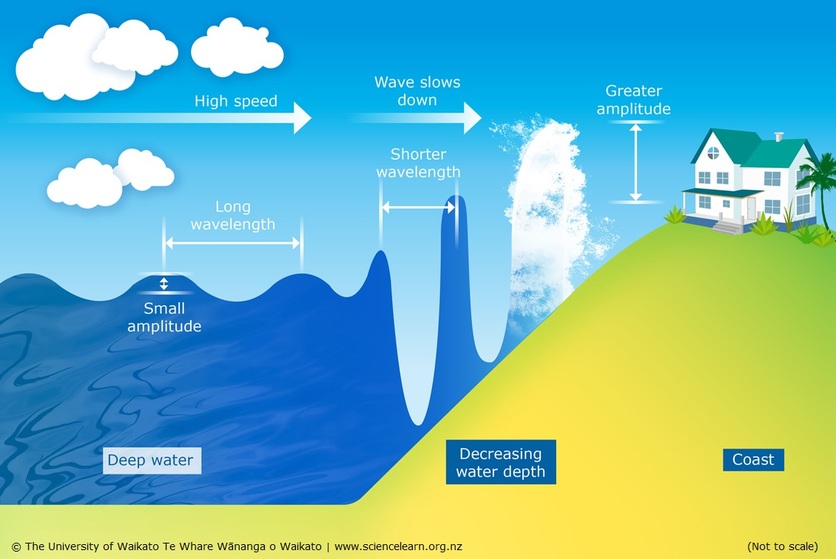Tsunamis are unique in their destructive power, but they share many features with other ocean waves. Learn how the two wave types differ, and how ocean waves of all kinds affect New Zealand’s coast.
Ocean waves are a powerful force in the lives of New Zealanders. We like to surf them and swim in them – yet we are also vulnerable to the power of ocean waves. In particular, coastal New Zealand is at high risk of severe flooding by a tsunami.
Several tsunamis – particularly those in South-east Asia (2004), Sāmoa (2009) and Japan (2011) – have focused attention on the destructive power of these waves. New Zealand researchers are actively working to understand how a large tsunami would affect our coast. Find out more about the work of:
- Dr Rob Bell – NIWA researcher, specialising in ocean waves, including storm surges and tsunamis, with a particular interest in sea-level changes
- Dr Richard Gorman – NIWA researcher, focused on waves, numerical modelling and wave forecasting
- Dr Te Taka Keegan – university lecturer with resarch interests in traditional navigation, Māori language technologies, indigenous language interfaces and multilingual usability.
- Dr Willem de Lange – Earth sciences university lecturer involved in numerical modelling, coastal processes and climatic hazards and tsunami research.
Key science concepts
For all their destructiveness, tsunamis share many features with surf waves and other water waves. In fact, waves of all kinds (such as water waves, sound waves and electromagnetic radiation) share several fundamental characteristics that can help us understand why they behave the way they do. Waves transfer energy and shoaling converts the kinetic energy in a tsunami wave into potential energy. Shoaling is one reason why tsunamis cause so much damage to coastal areas.
Use a tsunami lens to learn more about the nature of science. Dr Willem de Lange gives his personal insights about scientific inquiry and what it means to 'do science'. Then check out some of the measuring instruments Willem and others use when observing the natural world.
Take up the challenge
Student activities include:
- using a Mexican wave to demonstrate how waves transfer energy and to help your students visualise the wave behaviours of reflection, constructive interference and shoaling.
- using an interactive or paper-based Venn diagram to illustrate the key similarities and differences between tsunami waves and surf waves.
- using a shallow tray of water to demonstrate wave generation and behaviour.
- creating a model to demonstrate the connection between volcanic eruptions and tsunami waves.
- the Connected article The tsunami that washed time away tells the story of two geologists who find evidence to explain the strange occurrence of ocean pebbles on Northland clifftops, try the learning activities in the teacher support materials.
Useful links
News article about how ancient tsunami have been mapped in a new interactive project. The New Zealand Palaeotsunami Database was compiled from old records by the National Institute of Water and Atmospheric Research (NIWA).
The Ocean Today website has a series of videos on tsunamis from the National Oceanic and Atmospheric Administration (NOAA).


